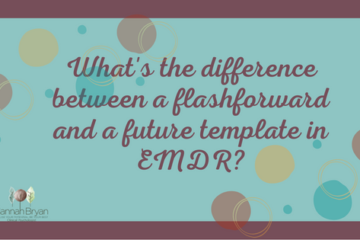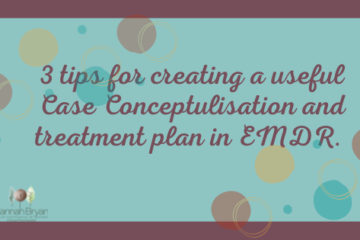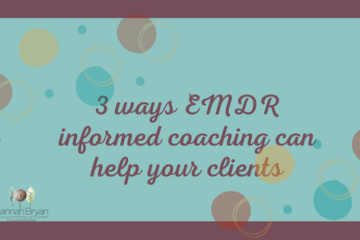Confession time… For many years I misunderstood the whole point of completing a phase 3 assessment with my clients. I saw it as a tick box exercise. I thought that I had to get it perfectly right before I could proceed to the really important work of processing the trauma memory. Sometimes in my early work, I would take a full session doing this assessment!! You might want to hear more about the realisation I have developed over the years. This has helped both enhanced and quickened my Phase 3 assessment. I try to spend no more than 5 minutes on this phase.
Remember it’s about activating the trauma memory.
This is such an important point but honestly it slipped past me on my basic training. I didn’t really appreciate that the whole point of our phase 3 is to activate the trauma memory. We want to bring it onto the short term working memory loop. Then we can process it using the bilateral stimulation.
It’s important to activate the thoughts about the memory. We want to activate the feelings and the felt sense in the body. I recall that I would spend so much time trying to get those cognitions perfectly right. I was completely missing the point!! In overthinking and overanalysing each bit of the assessment phase myself and the client were not activating the memory but instead having an intellectual discussion about it. We were probably even deactivating it. And lets face it, for many of our clients it’s difficult to think about the trauma they have been through. Any chance to avoid completely focusing on it will be taken.
When I think about the word Assessment in therapy, this for me is about taking a full history, diving deep into the key things that have happened to the person, thinking about their presenting problem etc etc. For Francine Shapiro however this is not what she meant when she called the phase 3 Assessment
We want to quickly open up the neural networks.
In our Phase 3 we want to quickly activate and open up the neural networks connected to the trauma memory. We want to do that and then get going with the trauma processing work. It reminds me of when my daughter was about 5 and we had gone to a water park with all those fun slides. We climbed up to the start of one but she was unsure about whether she wanted to go on it. We sat at the top of the slide for what felt like ages before she finally took the leap. By then I was a bit cold, fed up and a little anxious for her. I was deactivated and I didn’t really enjoy the ride at all!!!
In our Phase 3 we still want to activate all the neural networks that are linked to the trauma memory. As therapists we get stuck with overthinking this phase. I realise more and more through my therapy how important the body is in processing trauma memories. Actually activating the feelings and felt sensation are as important as the cognitions.
It’s ok to listen carefully and make suggestions for the cognitions.
Now, it might just be me but when I originally trained in EMDR, I had done a lot of training in CBT so to be honest the thought of getting the cognitions filled me with dread. It did feel like these were the most important part of the assessment. I would think what if I got in wrong? What if my cognitions didn’t match? What if this was the point when everyone realised I wasn’t really meant to be a Clinical Psychologist? Thankfully on the training we are given a list of cognitions that we can draw on and even show to the client.
What I find is that doing it more and more builds your confidence and ability. Have a look at my blog about cognition here By the time we are at this point we have already got a full history of the clients story, we have assessed what the presenting problem is, what the treatment goals are and identified the memories we are working on. I find it helpful to think about what domain the cognitions might be in. Is it Responsibility, Safety, Self defectiveness or Control/Choice. So as we are talking through the trauma memory, I might be listening out for cognitions and then drawing upon this to help a client identify the cognition in our Phase 3.
Once we have an emotion we can move on.
We will ask, when you think about that memory and those words (Negative cognition) what emotions do you feel now. Before I would engage in discussion here. I would normalise the emotion they feel. I would ask whether there is any more emotion, ask what the emotion meant to them. Now I will give a subconscious message that it’s not the time to engage in discussion around this. I will just take what the client says. Whether that’s 1 or more than 1 that’s ok so let’s move on to the body sensation. And again, when I ask my client where do you feel that in your body, I’ll take the area that they point to or the words they say and that’s it. They are activated, we are ready to dive in and start processing the trauma memory.
This is not really the time to end the session (although believe me in my early years of practicing EMDR before I really appreciated what this phase was all about, I did do this). But this is the point now when we really start processing the trauma memory.
If you found this blog interesting please do look at my website for more blog posts Click here . If you’d like to find out about my Demystifying EMDR Accreditation workbook please see the link here.



0 Comments